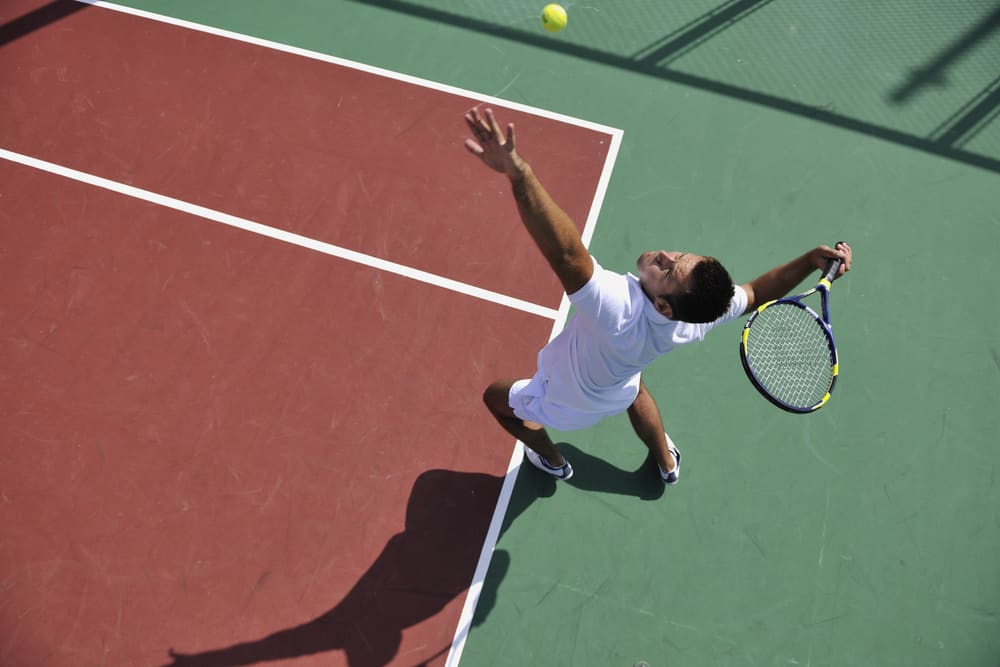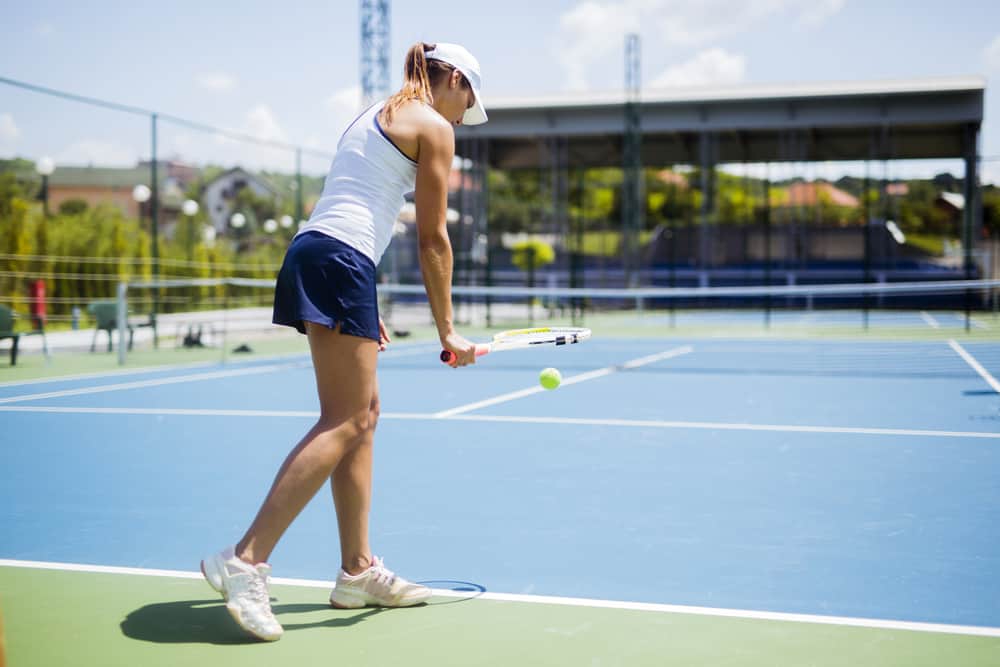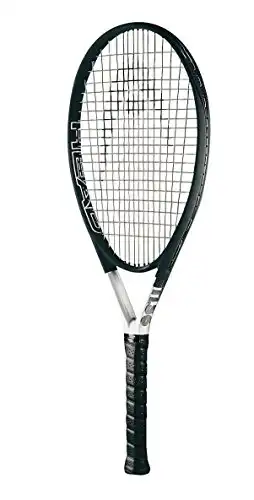Where To Stand When Serving in Tennis?
Serving might be the most crucial skill to master in tennis. If you can get it down to a science, you can start rallies on a high note and even win free points with the occasional ace. But, to develop a good serve, you first have to figure out where to stand.
Key Takeaway:
When serving in tennis, players must stand behind the court’s baseline. It’s illegal for the server’s feet to touch that line or the imaginary extension of the center of the court. Still, players are free to move along the baseline if they choose, which can open up different angles to serve from.
The rest of this article will explain the rules and strategies around where a player stands when serving in tennis.
HEAD's Ti series has long been considered one of the best racquet series for beginners and the Ti S6 tops them all! It's a do-it-all type of racquet at a super affordable price!
Where To Stand When Serving in Tennis According to the ITF
The International Tennis Federation (ITF) outlines strict rules about where to serve in their rulebook.
According to rule 16, “Immediately before starting the service motion, the server shall stand at rest with both feet behind the baseline.” This includes the imaginary extensions of the center mark and the sideline regardless of the deuce side or ad side.
Your serve is legal as long as your feet are out of bounds behind the baseline and between the center of the court and the sideline.
In addition to their positioning, your feet must also be at rest. A small amount of movement like a shuffle is fine, but players can’t walk or run or dance into a serve.
Related: Do you know how many serves are allowed in a game of tennis?
Using Your Legs When Serving in Tennis
While you’re not allowed too much movement horizontally on the side of the court, there is some vertical leeway. That’s right, jumping into a serve is fine.
In fact, most players jump before striking the ball on their serve to get a better angle with it and the service box.
As with any tennis serve, your feet must start behind the baseline, without any part of them touching the service boundaries. This includes your racquet. If you meet that condition, you’re free to jump from there into your serve.
Players can move forward into the court with their jump, but they must make contact with the ball before landing.
Jumping before striking the ball is one way to make your serve much more powerful.

The Foot Fault
Now that you understand the rules, it’s time to learn the consequences, and there’s no more frustrating way to lose a point in tennis than by a foot fault.
If your foot ever crosses the line before you make contact with the ball while serving, it’s a foot fault.
Committing one means losing whatever serve you’re currently on. If you’re on your first serve, it’s like any other fault and means that you move on to your second serve. If you’re already on that second serve, you lose the point.
Umpires rarely call foot faults in tennis. In most cases, the player would have to repeatedly put their feet well over the line for an umpire to call it.
That’s why getting into a good habit on your serve is crucial.
How To Avoid Foot Faults
The first habit to form when serving is to set your feet up in the right place, and by now, you know where that is.
While you’re allowed to have your feet a hair away from the line, this is a recipe for disaster.
Line umpires and opposing players may not be able to see the distance between your foot and the baseline. They may call you for a foot fault, creating an argument where there doesn’t need to be one.
Instead of maximizing every inch of the court, it’s best to get used to standing at least an inch behind the baseline with your racquet ready.
This erases any doubt and won’t negatively impact your ability to hit an ace.
Where Do You Stand When Serving in Doubles Tennis?
I’ve covered the rules around serving in general, but do they change when going from singles to doubles tennis?
In doubles tennis, you serve from behind the baseline and away from the imaginary extension of the center line. The only difference from the singles serving rules is that doubles players can slide all the way down to the doubles sideline.
Serving from that far away during a singles match would leave the court too open for both players, but doubles doesn’t have that problem because there are two players on each side.
Changing Where You Stand When Serving in Tennis
While you can’t go out past the sidelines when serving, there are advantages to serving from those parts of the court.
All service positions provide advantages and disadvantages, so players must choose wisely. Some players may decide to switch up where they stand to serve several times throughout a tennis match, while others just stick to one position.
Nevertheless, let’s get into different places to stand when serving in tennis, and the advantages or disadvantages of each placement.
Serving From Out Wide
Moving to the sideline is the most unorthodox of the three options listed here. It allows the server to hit the ball further out wide, stretching the returning player. This type of serve is difficult to hit.
This position also doesn’t allow for much else because the distance to the middle of the court is now much larger.

Serving From the Mid-Court Line
The other extreme lies next to the imaginary extension of the mid-court line. It’s more popular than serving from the sideline because getting the ball into the service box is easier.
It’s also the place with the shortest distance to the ‘T’ – the part of the service box where the length meets the width in the middle of the court.
The ‘T’ is what most players aim for when they’re looking for an ace.
Serving From Somewhere In Between
This is the most popular option of all, commonly seen in deuce court serves. Most professionals serve from somewhere in the middle of the baseline and closer to the mid-court.
This position allows the server to make use of many different angles, confusing their opponents and keeping them guessing.
Where to Serve From – Final Thoughts
You can serve from anywhere in tennis if you’re behind the baseline and between the sideline and imaginary center line.
Each spot offers different advantages and disadvantages, so choose wisely and build good habits. The aces will come eventually!
Related FAQs
Q: How should I position myself for a forehand serve?
A: To execute a forehand serve, position yourself with your non-dominant foot forward, parallel to the baseline, and your body sideways to the net.
Q: What is the optimal serve position?
A: The optimal serve position is standing on the baseline, ready to hit the serve from either the deuce or ad court.
Q: How can I improve my flat serve technique?
A: To improve your flat serve, focus on tossing the ball slightly in front of you and making contact at the highest point to generate power.
Q: What is the significance of a cross-court serve?
A: A cross-court serve can force your opponent to move laterally, opening up the court for you to follow up with an aggressive shot.
Q: How can I develop a consistent serve?
A: Developing a consistent serve requires practicing your toss, timing, and contact point repeatedly to develop muscle memory for a reliable technique.
Q: Should I aim to serve up the middle or out wide?
A: Depending on your opponent’s positioning and weaknesses, you can mix up serving up the middle to keep them guessing or serving out wide to push them off the court.
Q: Is it crucial to place the ball accurately when serving?
A: Yes, placing the ball precisely in the service box can help you target your opponent’s weaknesses and increase your chances of winning the point.

Welcome to TheVolleyLlama.com. My name is Keith, I’m just a lover of all sports that involve a racquet, net and a ball. I played competitive high school varsity tennis, love racquetball and my whole family plays pickleball regularly. I started this website to help give people like you the basics to learn these wonderful games.


